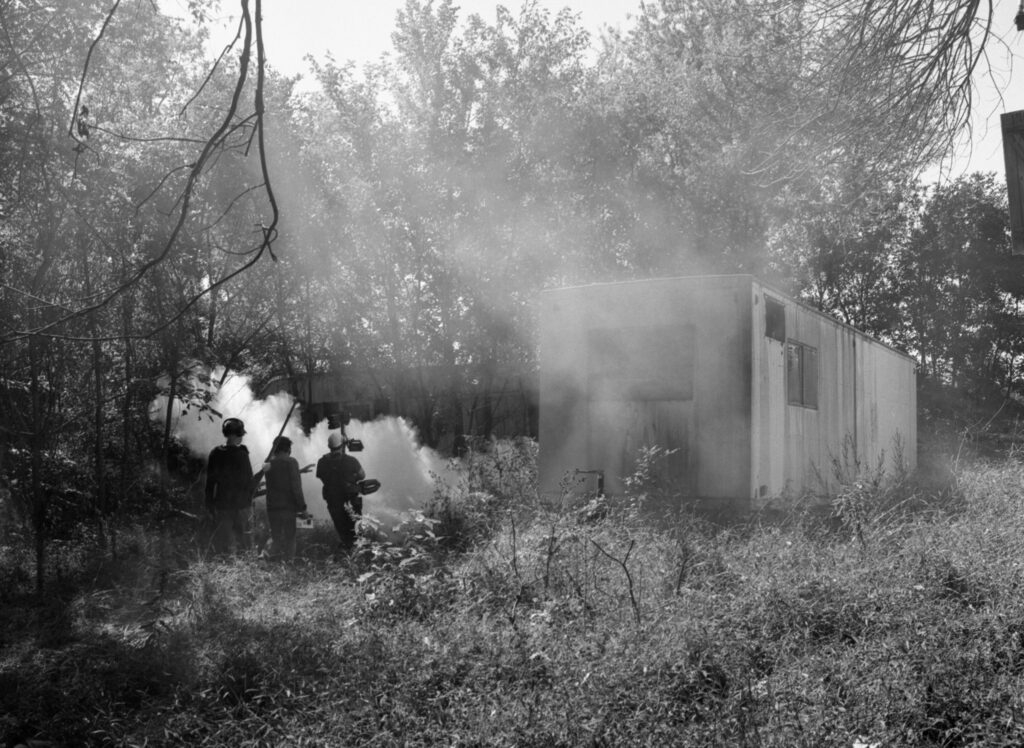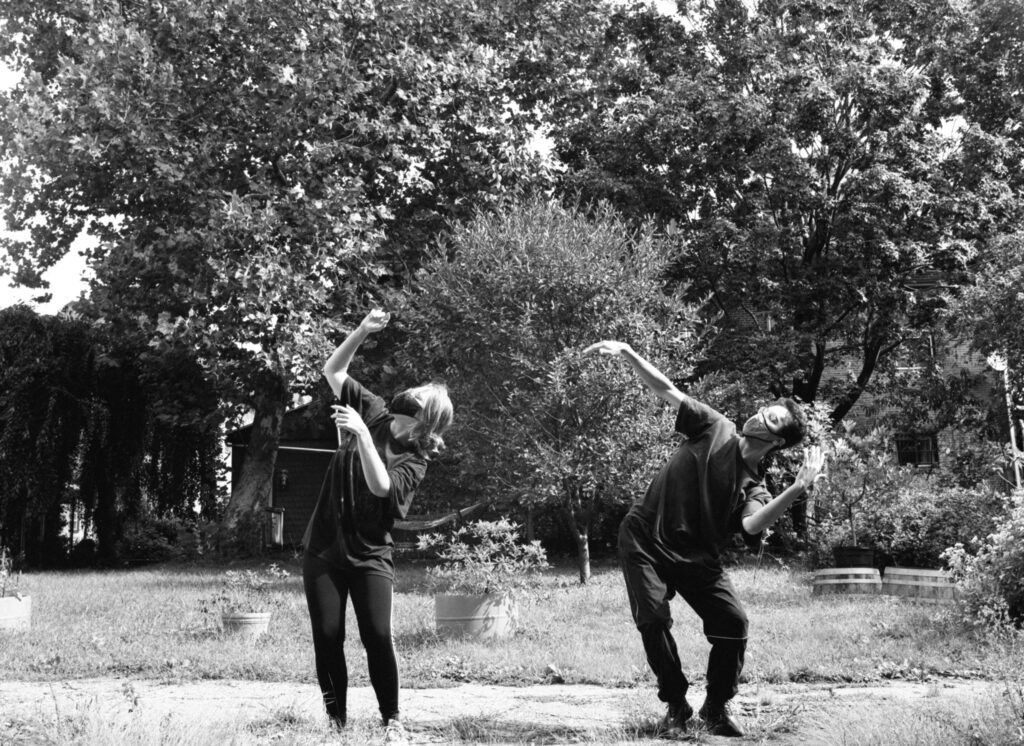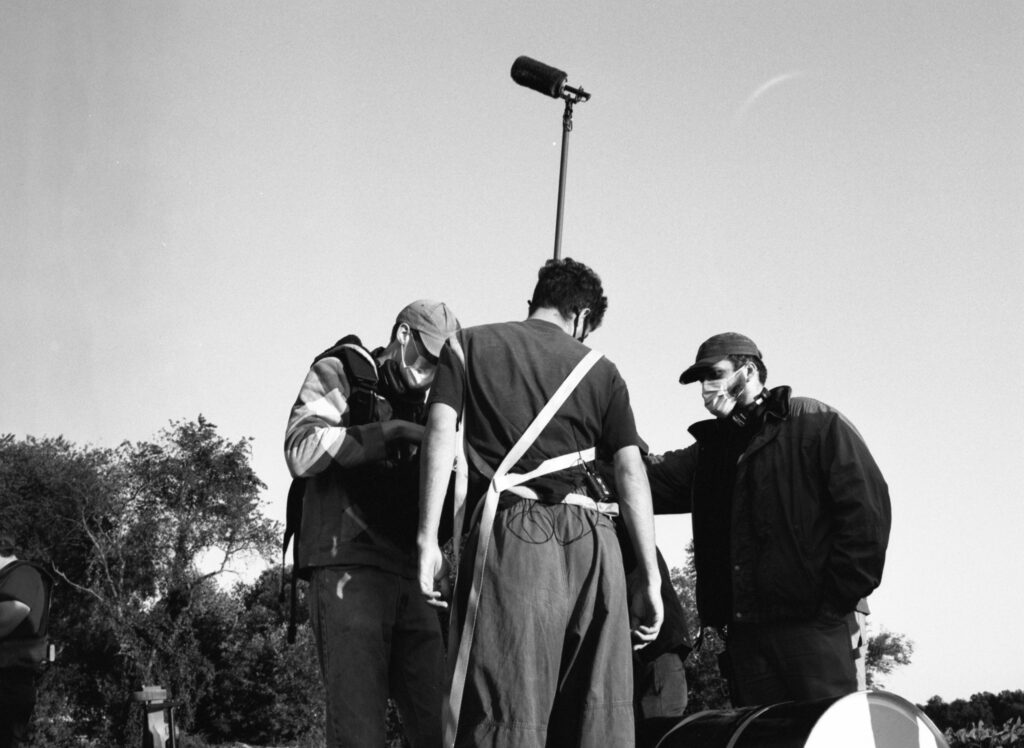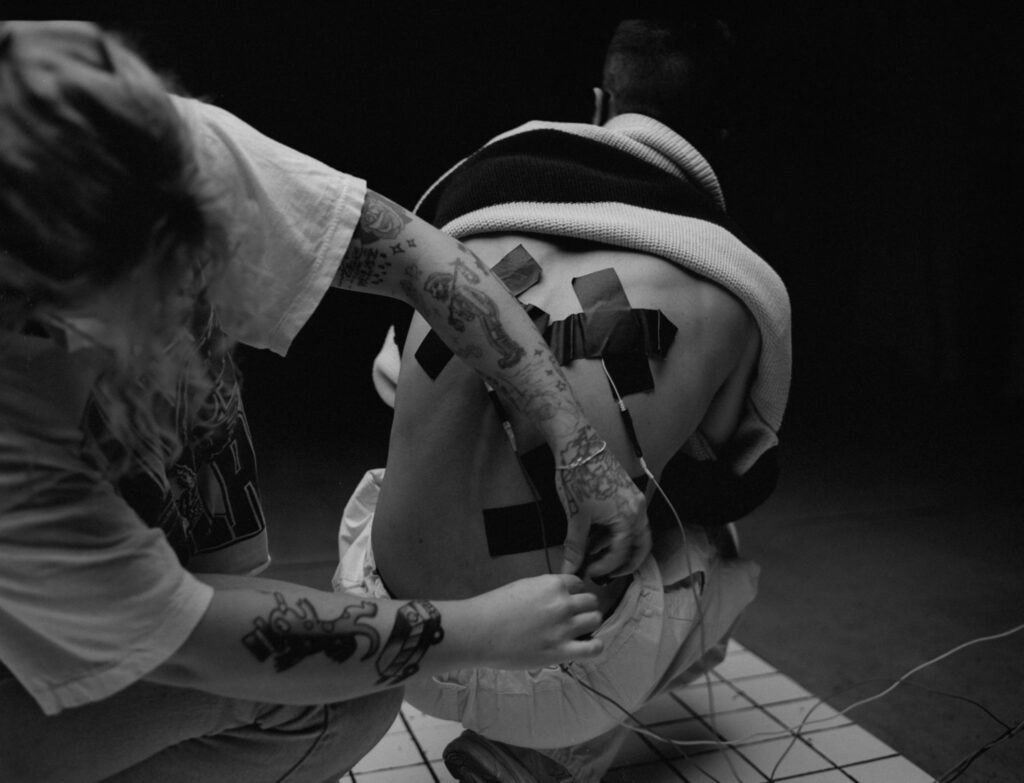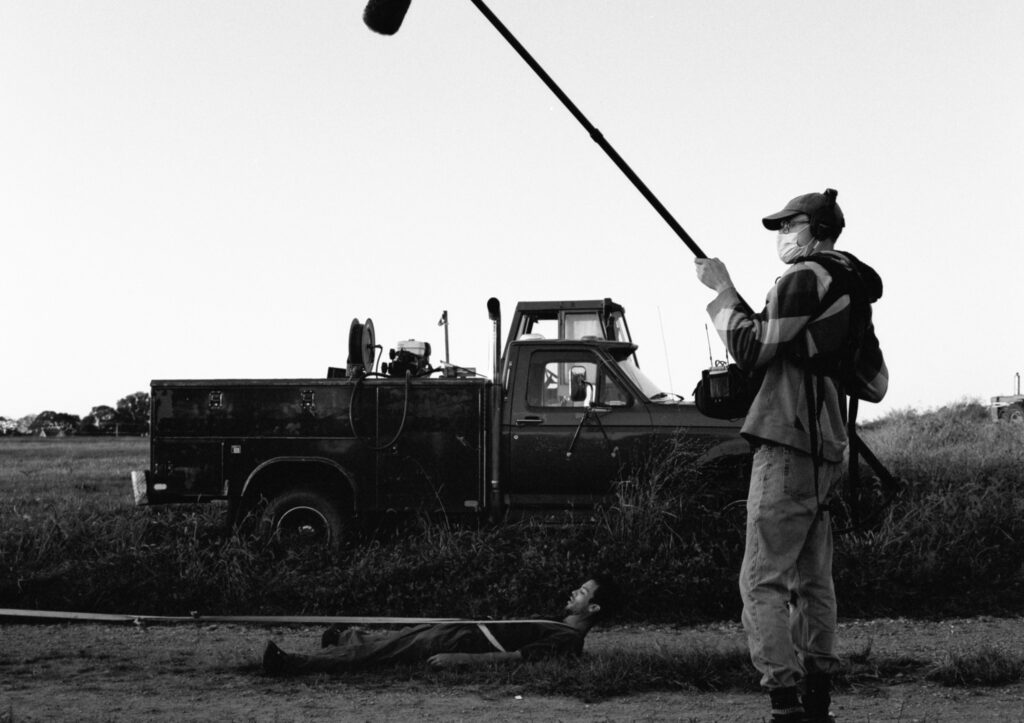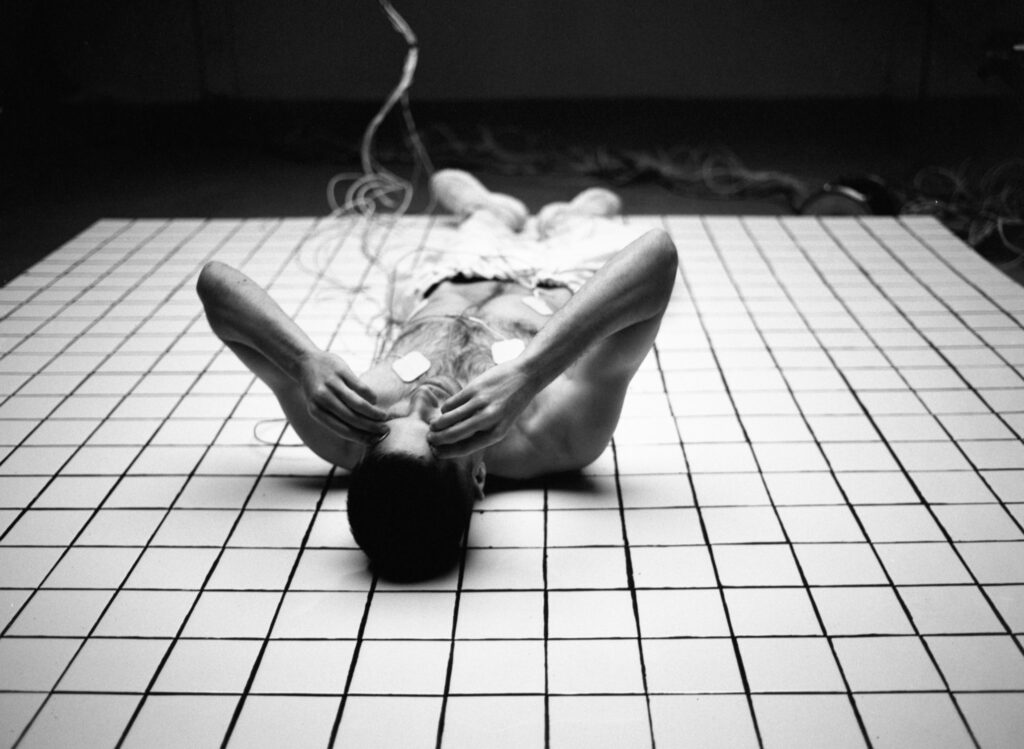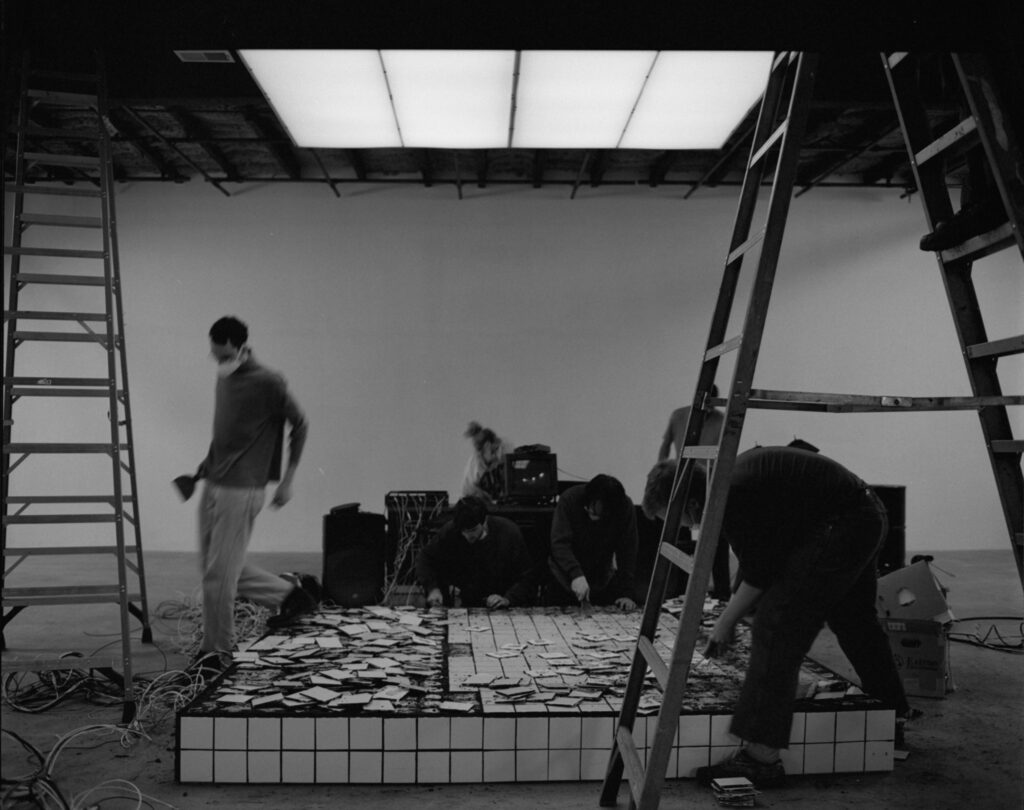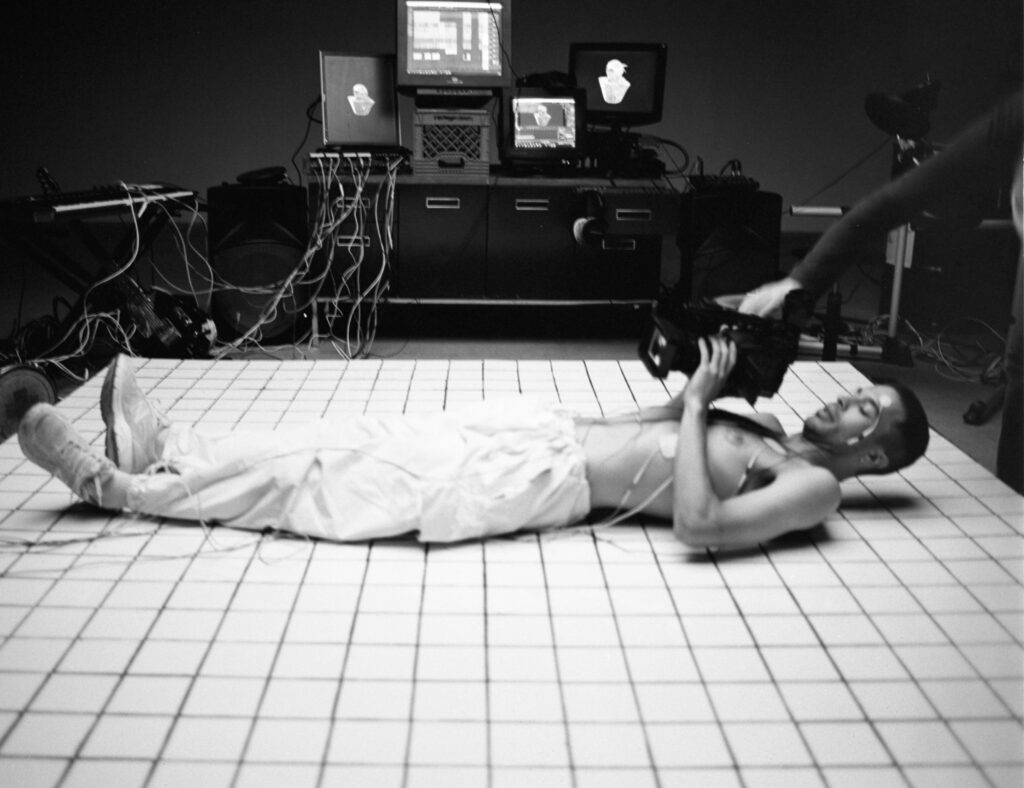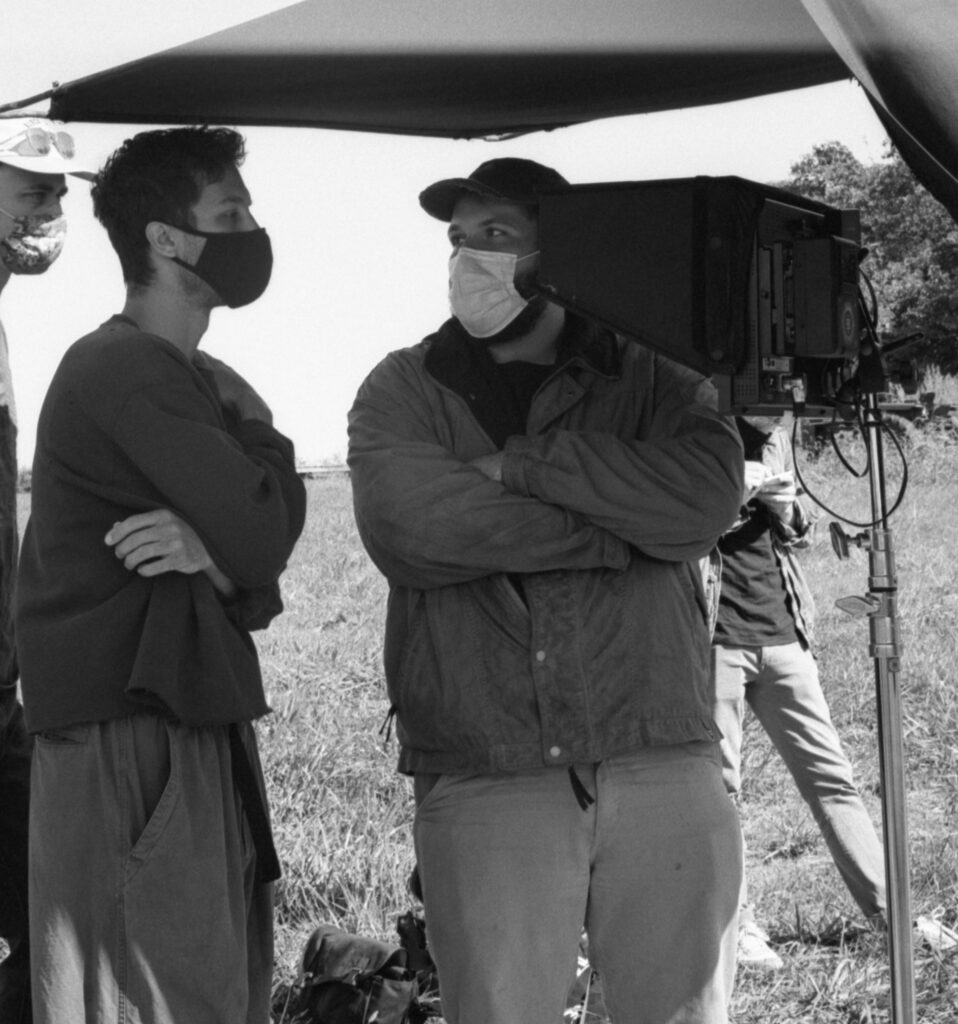
Ultima is the latest single and music video by ultrapop artist Body Meat. It happens to be also the first attempt at directing for dop Daniel Brennan. Impressed by his work, after a little chat on social media, we decided to interview him. This is what he told us.
How did you meet Body Meat and how did you develop this project together?
I met Body Meat (Chris) at a show he played in Philadelphia, and then connected with him more directly when he moved here. Once we were in the same city, we had a lot of good mutual friends and we became friends. We shot a pretty quick music video for his track Nairobi Flex in 2018 and really liked collaborating visually.
I’m a huge fan of his music, and we agreed that the next thing we did together maybe we would involve choreography, which is something we have both been interested in and admire. Over the pandemic lockdown Chris would send me tracks and rough mixes of ideas. Once we started to talk about where the songs came from we realized that it kind of pointed to home and origin.
As we understood Ultima would be just a part of a bigger audiovisual production titled 4700. Can you tell usme a little bit more about it?
Yeah, Ultima is a portion of our short film 4700. It’s somewhere between a visual album and a documentary. Chris and I were talking and he was telling me that the landline phone number on the farmland in Maryland he was living on ended in 4-7-0-0, and that it always stuck with him. We used it as a kind of working title.
When we went to the farmland for the first time, which was the first time he had been there in 16 years or so, there was this huge old truck that hadn’t moved since Chris had left, it was completely overgrown. We noticed that the model number on the truck was “4700” with a metal emblem of the number on it. It kind of solidified things for us.
4700 is about Chris kind of reclaiming an energy that he forged there with his family on that farm. It definitely uses reality as a groundwork but visually gets more expressive and metaphorical. Visually, I wanted to kind of match how Chris makes his music and records in such a range of fidelity and busy-ness that blends together so beautifully, so a big part for us was to use a lot of different mediums and open up some room for improvisation using different cameras.
When it comes to choreography I always find interesting the combination with the editing. How much of what we see was storyboarded and how much came naturally from shooting on location and editing? How did you work with coreographer Helen Noland?
Working with Helen was incredible. Chris and Helen are good friends, and she was an easy go-to. We had an initial meeting over Zoom and just talked about the whole project and some references we’re really into. It was Chris’s first time dancing and learning choreo, and he picked it up super fast, I think in like 10 days or something he had the entire thing down knowing it was going to be performed in one take.
We had a few rehearsals (outside due to Covid) where we blocked it out with a director’s viewfinder, our phones and had each moment storyboarded pretty quickly. Helen’s really intentional choreography made it amazing to shoot, she used every part of the song and there was so much emphasis in the moves that reads so well on camera.
We shot the whole routine mostly a 1-take, we cut from low-mode to high-mode once for the level of the lens when Chris starts on the ground in the beginning. Aside from that, the entire take in Elkton (the farmland) is the same take uncut. I’m really impressed with Chris’ moves! We both are. The cuts to the laboratory/dark room we shot later and didn’t even plan on doing it. But after we built the set, we figured we’d get the choreo in that stage.
Once we got the film back we realized there were some moments that showcased the choreo better and we decided to detach ourselves from going for a strict 1-take and let it breathe between the 2 locations. Shoutout to amazing steadicam operator Mike Thackray for operating a 3-minute one take and learning the routine so quickly.
I loved the look of the film, it’s really beautiful. In particular, I loved the section in the dark mysterious room. How did you shoot that part?
Thank you. We shot the lab scenes on 16mm with a small sponsorship from Kodak, which was great. Working with them and their lab was a pleasure. Originally we were going to shoot the exteriors and farm scenes on 16mm and use digital for the lab portions which would maybe read more cold and digital and impersonal. We had to flip that around due to some scheduling conflicts and shot on the Alexa LF for exteriors and 16mm for the lab. In the end, I’m really glad that’s how it worked out because I think it gives a detachment from reality and a more emotional/warm feeling to this really intimidating/mechanical set.
It was definitely a marriage between camera and art departments. I had talked about the look and feel of it with the production designer Jake Lazovick. I wanted to shoot wide enough to see the entire room, so we designed a big soft box that we dressed to be fully visible in the shoot, which was a bit of a balancing act. We decided to go with a tile stage for texture and also to bounce back some of that light so it wasn’t so top-down and filled Chris’ face more. Our propsmaster Alex Amici sourced thousands of feet of cable and made many deep dives on the internet sourcing props and monitors that fit really well.
You work mainly as a Dop. Was this your first time as a director? Are you thinking to transition to this position or to keep doing both roles?
Shooting is definitely my passion. This was my first time directing, and I really enjoyed it. I think for now I’m really interested in the joint role of dop and director and don’t want to break off from or slow down shooting, at least for the near future. The learning process of shooting is still really inspiring and motivating to me. I think in the meantime, taking my time with personal projects and making them when they’re ready seems good to me. I’m definitely interested in my next film being narrative fiction and love the idea of working with actors. I’m grateful to do either or both.
What was the most challenging thing as a director in this music video?
Editing on a MacBookPro! Covid made editing and not being able to just be side by side and fully together difficult. We would usually use Zoom or Discord and stream our screens while working on the edit or animations, which was a lot to do over the internet. It also made me really appreciate those technologies though, it’s pretty amazing that we were able to do that remotely on an indie budget. In terms of making the film beforehand and on-set everyone made this so easy and enjoyable. I’m really thankful for the crew and people who came out for this.
Who are your favorite DOPs and directors?
I love Harris Savides. His soul comes through his work. Jean-Yves Escoffier and Rodrigo Prieto, too. More contemporarily, I love the work of Andre Turpin, Nicolas Karakatsanis, and Rina Yang. As for directors, I love Andrei Tarkovsky, John Cassavettes, and Rainer Werner Fassbinder and recently Apichatpong Weerasethakul.
To conclude, we found out you speak a little bit of Italian! How did you learn it and why?
I guess I’ve been more of a language than math person as a student! They offered Italian during highschool, I took it and kind of stuck to it in college too.

